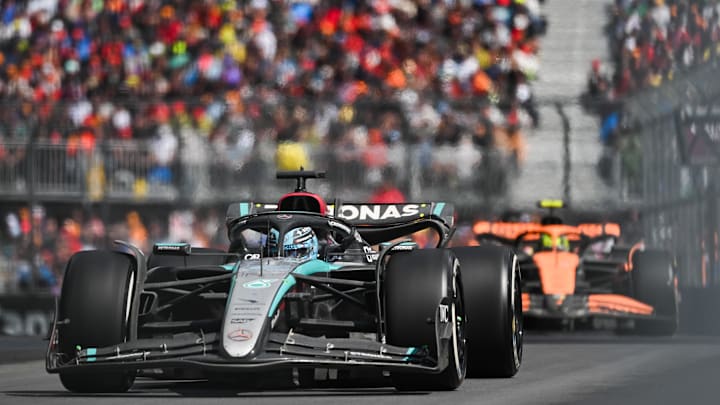Red Bull To Follow McLaren And Mercedes Front Wing Design After FIA Verdict

Red Bull team principal Christian Horner admitted that his team would adopt a similar front wing design to McLaren and Mercedes after the FIA confirmed that the front wings on both teams' cars complied with the regulations.
During the Italian Grand Prix, where Ferrari's Charles Leclerc secured victory through a remarkable one-stop strategy, suspicion arose in the Ferrari and Red Bull garages that the front wings on Mercedes' W15 and McLaren's MCL38 F1 cars carried more flex than the permissible limit, causing them to notify the FIA.
The topic of flexible front wings has gained significant attention in the ground effect era, with findings indicating that even minimal flex beyond the legal limit can greatly affect a car's performance. To prevent any team from exploiting the rules, the FIA has been using cameras to closely monitor front wing compliance since the Belgian Grand Prix.
After the governing body confirmed that McLaren and Mercedes were adhering to the regulations, Horner revealed that the clarification now allows Red Bull to explore a similar front wing design for the RB20. This statement comes as Red Bull faces challenges pertaining to the car's performance, allowing McLaren to close the gap in both championships. He told the media:
"I think what's crucial for any team, as with all these things, is always clarity.
"Is something acceptable or is it not? If it's deemed to be acceptable, then obviously that encourages you to pursue similar solutions yourself.
"So the regulator, obviously they have all the information available. They have all the analysis that they've recently put cameras on many cars.
"They're collecting that data. But yeah, it's one of those things, as I say, that if it's deemed to be acceptable, then you pursue that route."
Speculation suggests that McLaren's success and Mercedes' improved performance in 2024 are largely due to the balance advantages provided by a flexible front wing.
The FIA plans to maintain its scrutiny of front wings during this weekend's Azerbaijan GP in Baku and the upcoming Singapore GP. Last week, the governing body confirmed that "this exercise will continue at least up until Singapore to ensure every team will have been running the mandated FIA camera on different types of tracks (low, medium, high, and very high downforce)."
While it is often assumed that a wing can flex freely on track as long as it passes static load tests, technical directive TD34 clarifies that the FIA deems "designs whose structural characteristics are altered by secondary parameters" such as aerodynamic load and temperature to be illegal. However, it acknowledges that no wing can be completely rigid and some flex under load is expected.
